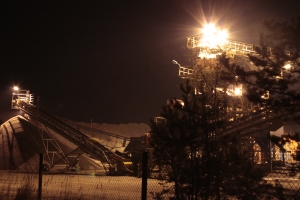Mesothelioma is an incurable cancer with a very low survival rate. Boston mesothelioma lawyers know that the average length of time a person survives with mesothelioma is just nine to 12 months. Because of the devastating consequences of a mesothelioma diagnosis, it is essential to do everything possible to avoid the risk factors that can result in the development of mesothelioma. 
For most patients diagnosed with mesothelioma, the cause of their condition is exposure to asbestos. Asbestos is made of naturally occurring silicate fibers that, when breathed in, can become lodged in the lining of the lungs as well as in the stomach lining. The fibers cause irritation that, over decades, can eventually result in the development of mesothelioma, lung cancer and asbestosis. Because of the tremendous risks associated with asbestos and the high fatality rates of those exposed, asbestos is largely banned from most products and is tightly regulated today. However, people continue to develop mesothelioma. One study recently took a look at whether this deadly cancer may be caused by taconite dust.
Does Taconite Dust Cause Mesothelioma?
The study related to the link between taconite dust and mesothelioma was conducted by researchers from the University of Michigan and is called the Minnesota Taconite Workers Health Study. The research was undertaken at the request of the state legislature because of a concern that miners on the Iron Range were developing mesothelioma at higher rates than expected compared with the general population.
The research so far has revealed that a person’s risk of developing mesothelioma increased around three percent for each year that the individual worked in the mines. However, lingering questions remain as to the risks for mine workers today.
One problem with determining if taconite mines are a cause of mesothelioma is that it takes decades for this cancer to develop. This means that the majority of mesothelioma cases being studied today likely originated decades ago. At the time when the affected workers were in the mines, there were fewer measures taken to protect the health of workers. Today, conditions are much improved for mine workers. This means that any link between work in the mine and mesothelioma might not be as strong of a link in today’s world with tougher workplace safety standards in place.
Today, there are better ventilation systems in mines and there are better engineering systems that are used to process the ore. Experts now indicate that exposure to dust from taconite operations is generally within acceptable limits that are considered safe for workers, unlike in the past. An analysis of air quality in communities surrounding taconite mines has also been revealed to be cleaner in terms of particulates than the air in local nearby cities such as Minneapolis.
While better ventilation systems may have made a significant difference, the fact remains that there are still serious risks for those who breath in dust and particles on the job- whether those particles are taconite or other substances. The link between asbestos and mesothelioma was not fully understood for a long time when asbestos was so widely used, and there may be other dangerous particulates that workers are breathing in today that could also lead to development of mesothelioma down the line.
If you or a loved one is diagnosed with mesothelioma in Boston, call for a free and confidential appointment at (617) 777-7777.
More Blog Entries:
Mesothelioma, Pre-Existing Conditions and the Affordable Care Act, Mesothelioma Lawyers Blog, October 18, 2013.
 Mesothelioma Lawyers Blog
Mesothelioma Lawyers Blog

